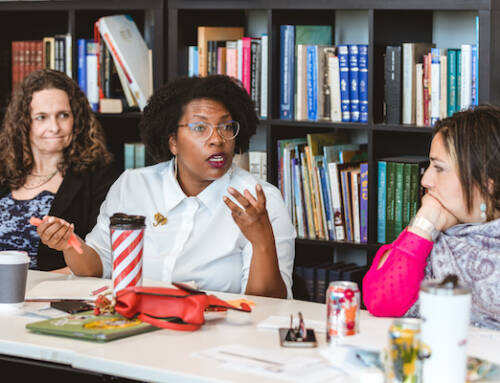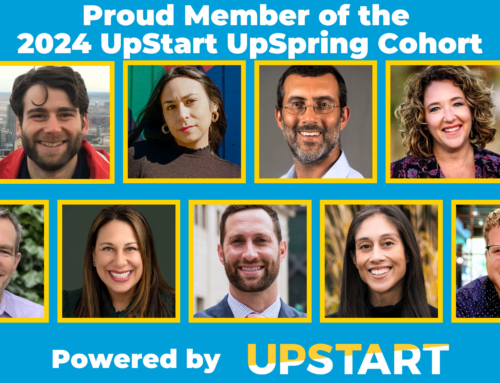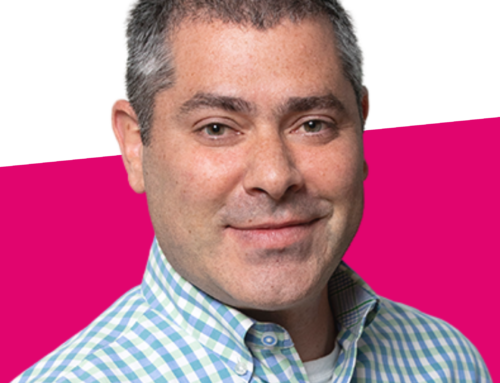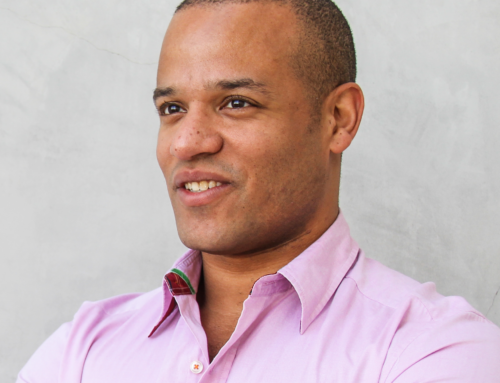What do a group of local Jewish day schools have in common with Apple?

Nonetheless, through a new program jointly run by the Jewish Education Project and Upstart Bay Area (a Jewish “social venture and consulting innovation firm”), faculty at local schools are receiving training in the “design-thinking” methodology that is credited with fueling many business innovations.
“We’re trying to become the Silicon Valley of the Jewish day school world, to be a real location for measurable innovation,” said Rabbi Ed Harwitz, the Jewish Education Project’s director of day school leadership and innovation.
With funding from UJA-Federation of New York, the Jewish Education Project and Upstart last fall brought seven schools together for the Day School Collaboration Network. This fall they plan to add 10 more.
The idea is to train participants — most of them teachers and junior administrators who are alumni of other Jewish educational leadership fellowships, particularly theLookstein Center of Bar-Ilan University’s Educational Leadership Advancement Initiative (ELAI) — to use design-thinking methodology as a tool for improving their schools and, ultimately, for sharing best practices with the entire day school field.
But what is design thinking?
According to Rabbi Harwitz, it’s a framework for identifying problems and developing creative solutions by consulting not just top leaders, but a variety of stakeholders, such as teachers, students, support staff and parents.
“You need to first stop and identify a challenge, and before you start acting to solve it, you have to be certain about whether that’s really the challenge,” he explained. “You have to interview students, parents, fellow educators and sometimes lay leaders to find out where the community comes together on a given problem. What’s exciting is that in every case, people start the process believing a problem looks a certain way, then in the end come up with a solution that goes deeper.”
Tova Zucker, the coordinator of special projects at Hebrew Academy of Five Towns and Rockaway (HAFTR) and the school’s representative in the Day School Collaboration Network, said, “Design thinking gets our creative juices flowing and puts people first.”
“In most organizations, problems are solved when people in positions of authority sit around the table and plan everything out,” Zucker, a former classroom teacher, said. “What they fail to do is include the people who are part of the problem and can also be part of the solution: the people who are directly affected.”
Another aspect of design thinking, she said, is the idea that “if something doesn’t work, it’s not a complete failure: you learn from it.”
Each school participating in the Day School Collaboration Network creates a team that, with coaching from consultants provided by the program, uses the design-thinking framework to take on a project.
At Schechter School of Long Island, for example, participants focused on making student prayer services more meaningful, while HAFTR began rethinking its drop-off and pick-up procedures, to make the process safer and more efficient. Meanwhile, Yeshivat Har Torah, in Queens, explored strategies for offering students more individualized attention — a project that has led to more ambitious plans for recruiting student teachers for Har Torah and other day schools.
Debbie Hamburg, who represented Brooklyn Yeshivat Shaarei Torah last year, but is now moving to a job at Magen David Yeshivah (which is also in Brooklyn, and will be joining the network this year), said the training helped her “frame my questions” and “gave a framework that made a lot of sense.”
Hamburg’s team at Shaarei Torah initially focused on making literacy “more accessible and comfortable,” but “the more we started talking and explored, we realized that wasn’t really the issue: the issue was more about … how do you hire and train assistants in the classroom.”
In addition to its design-thinking approach, a unique aspect of the Day School Collaboration Network, Rabbi Harwitz said, is its focus on recruiting “grass-roots educators” as team leaders, rather than top administrators or lay leaders.
“These are people who throughout their careers have thought of themselves as classroom teachers and not necessarily been involved in strategic questions about the school,” he said, adding “We have the potential to leverage them in ways that helps the field of Jewish education, not just their classroom.”
The program is also remarkably pluralistic: participating schools this year were Yeshivat Har Torah in Queens (centrist Orthodox), Rodeph Sholom Day School in Manhattan (Reform), Hebrew Academy of the Five Towns and Rockaway (centrist Orthodox), Solomon Schechter School of Long Island (Conservative) and Yeshivat Shaare Torah (right-wing Orthodox) in Brooklyn.
So far, Rabbi Harwitz said, neither denominational differences nor rivalry between schools has gotten in the way, and participants have been eager to share ideas with one another.
“People told me this was never going to work, that someone working at an Orthodox school in Brooklyn with a specific type of population would never work with someone from a different type of school in Manhattan,” Rabbi Harwitz said. “But it is happening. And that again goes back to the Silicon Valley model: the only way big innovations occur is if people step out of their silos and are concerned about the whole industry.”
Our purpose is to enable entrepreneurs to bring bold Jewish ideas to light. We help them reach Up to people in new ways that are meaningful, more inclusive, and create a brighter future for our Jewish community and the world we share.





